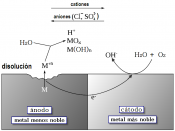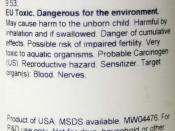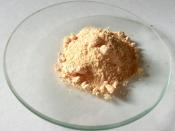ELECTROCHEMISTRY: 12.6 ELECTROPLATING - an electrolytic process that deposits a thin, uniform layer of metal (gold, silver, copper, nickel, chromium, zinc, or tin) on a conducting surface to enhance their aesthetic appeal or to provide corrosion protection.
- even non-conducting material such as wood, plastic, or leather can be electroplated if first treated with wax or a lacquer containing graphite.
- The electroplated object is used as the cathode of an electrolytic cell and the anode is usually the electroplating metal.
- silver cyanide, potassium cyanide and potassium carbonate each constitute about 4% of the electroplating solution.
- the composition of the electrolyte varies with different plating process.
- the electrode half-reactions are: Anode (oxidation): Ag(s) + 2CN-(aq) Ag(CN)2-(aq) + e- Cathode (reduction): Ag(CN)2-(aq) + e- Ag(s) + 2CN-(aq) The end result is the transfer of silver from the anode to the cathode.
Ag(s) Ag(s) (anode) (cathode) Electrolytic Purification of Metals - electrolytic cells designed for this purpose consist of many closely-packed anodes and cathodes - anodes contain the impure metal and the cathodes are thin sheets of very pure metal.
- When cell in operation, the anodes slowly dissolve as pure metal is deposited on the cathodes. The impurities form a sludge on the bottom.
Eg. Purification of lead, the impure metal is obtained by reduction of lead(II) oxide with coke, and further reduced by carbon monoxide.
PbO(s) + C(s) Pb(l) + CO(g) PbO(s) + CO(g) Pb(l) + CO2(g) Anode (oxidation): Pb(s) Pb2+(aq) +2e- Cathode (reduction): Pb2+(aq) + 2e- Pb(s)



